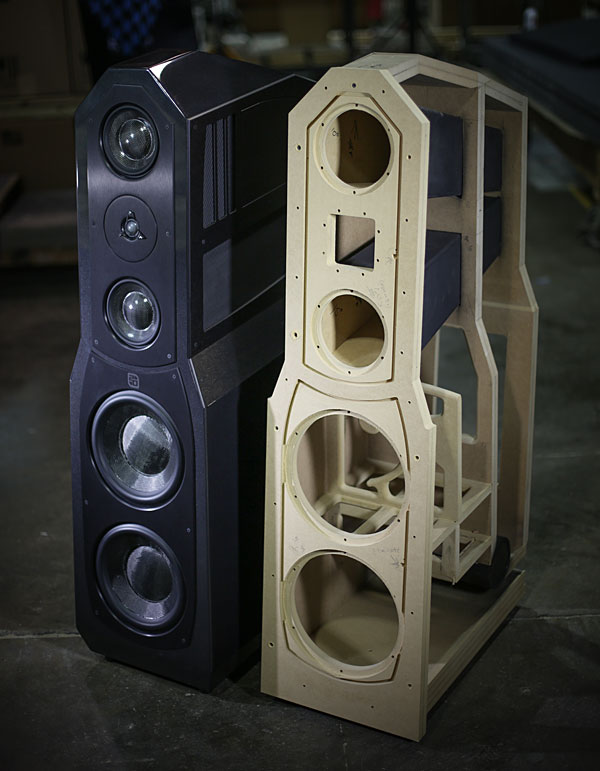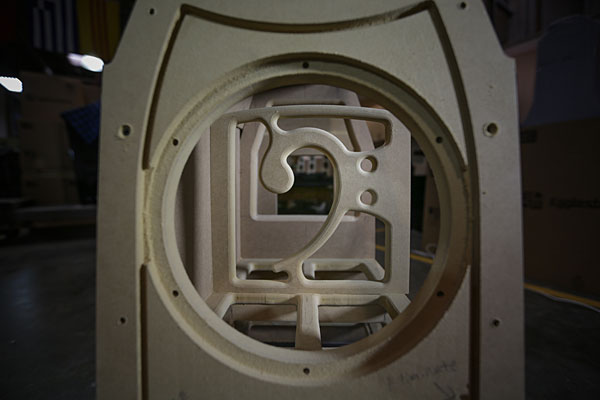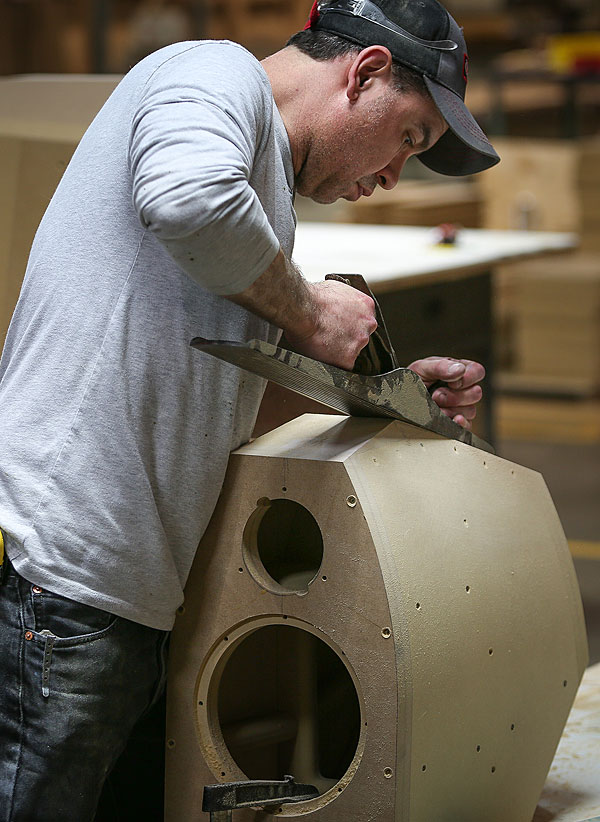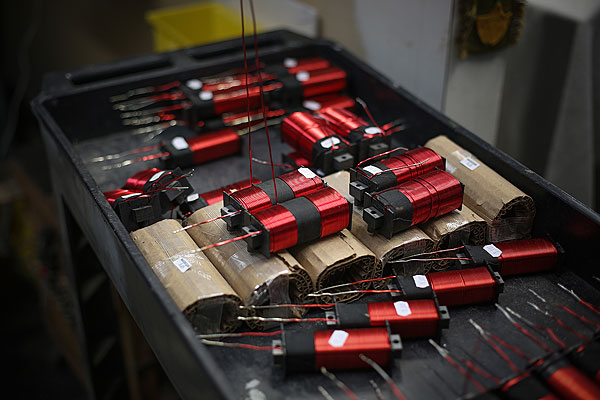| Columns Retired Columns & Blogs |
... "although extremely expensive to implement, the 'Transmission Line' midrange porting design delivers midrange detail and purity, which to our knowledge, cannot be achieved in any other way", he sounds like the reincarnation of the late Bud Fried in his proselytizing on the subject transmission line loading.
MF's comments regarding the "fun factor" from listening with these speaker parallels sentiments in Steve Guttenberg's recent video describing how, with some speakers, you feel the music:
https://www.youtube.com/watch?v=tWqcu1wR1sw
That internal cabinet brace in the shape of a bass clef is just too cute.












































